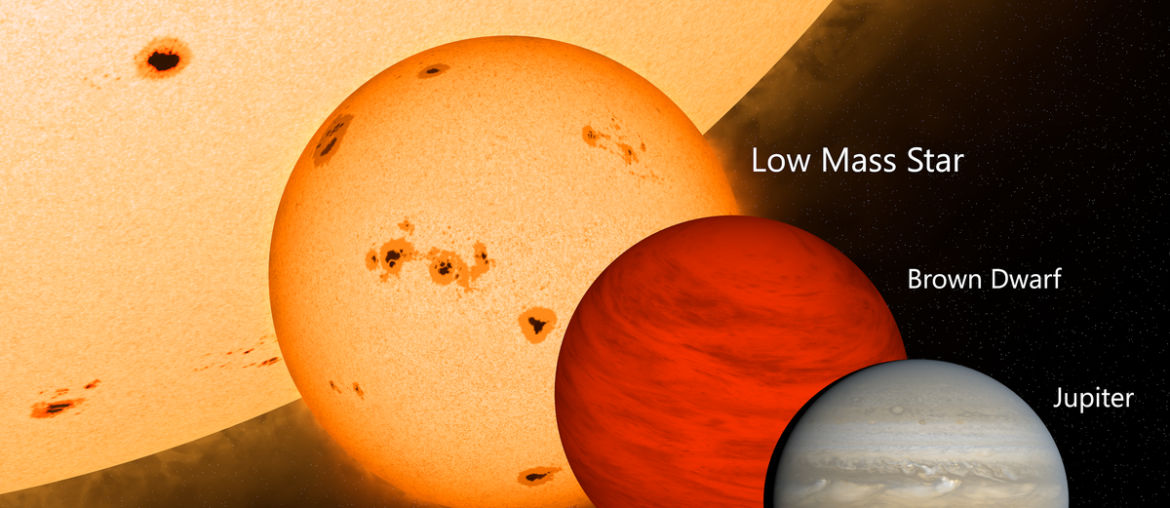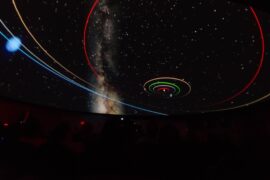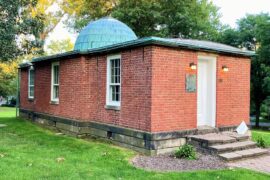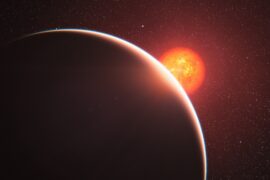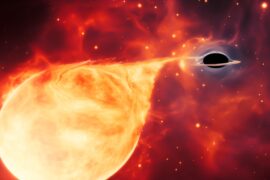The neighborhood just beyond the faintest stars holds objects that blur the line between planets and true stars; many were found in infrared sky surveys and tell us about formation and atmospheres at low masses. These substellar objects are often close enough to study in detail, letting researchers compare temperature, composition, and motion across a compact sample.
There are 25 Brown Dwarf Stars, ranging from 2MASS J0415-0935 to Wolf 940B. For each, data are organized as Distance (ly), Spectral type, Mass (Mjup) — you’ll find below.
How do these objects differ from low-mass stars?
They never sustain stable hydrogen fusion in their cores, so they cool and fade over time rather than settling on a main sequence; that difference shows up in cooler temperatures, spectral types (L, T, Y), and masses typically below ~75–80 Mjup, which is why mass and spectral type are included in the table below.
Can any of these be observed with amateur equipment?
Most are very faint at visible wavelengths but some nearby or warmer examples can be detected with larger amateur telescopes and sensitive CCDs or infrared cameras; for many targets you’ll need published coordinates and comparison charts (searchable in 2MASS or mission catalogs) and often an observatory-grade setup to get useful data.
Brown Dwarf Stars
| Name | Distance (ly) | Spectral type | Mass (Mjup) |
|---|---|---|---|
| Luhman 16A | 6.53 | L7.5 | 20–40 |
| Luhman 16B | 6.53 | T0.5 | 20–40 |
| Epsilon Indi Ba | 11.82 | T1 | 40–60 |
| Epsilon Indi Bb | 11.82 | T6 | 25–45 |
| Gliese 229B | 19.30 | T7 | 20–50 |
| Gliese 570D | 19.16 | T7.5 | 20–50 |
| HD 3651B | 36.06 | T7.5 | 20–50 |
| HD 130948B | 58.55 | L4 | 40–70 |
| HD 130948C | 58.55 | L4 | 40–70 |
| HR 7672B | 56.98 | L4.5 | 40–70 |
| Ross 458C | 38.16 | T8 | 14–30 |
| Wolf 940B | 41.55 | T8.5 | 20–40 |
| 2MASS J0415-0935 | 18.72 | T8 | 20–60 |
| SDSS J125453.90-012247.4 | 39.88 | T2 | 15–40 |
| 2MASSI J0559191-140448 | 47.10 | T4.5 | 15–45 |
| DENIS-P J0255-4700 | 52.50 | L8 | 30–60 |
| Kelu-1A | 61.00 | L2 | 30–60 |
| Kelu-1B | 61.00 | L3 | 25–50 |
| SDSS J042348.57-041403.5A | 44.92 | L6 | 25–50 |
| SDSS J042348.57-041403.5B | 44.92 | T2 | 15–40 |
| SCR J1845-6357B | 12.70 | T6 | 15–40 |
| 2MASS J15344984-2952274A | 61.40 | T5.5 | 30–60 |
| 2MASS J15344984-2952274B | 61.40 | T6 | 20–50 |
| HD 4747B | 47.05 | T1 | 40–70 |
| Gliese 229C (note: historical candidate—excluded) | 0.00 | N/A | N/A |
Images and Descriptions
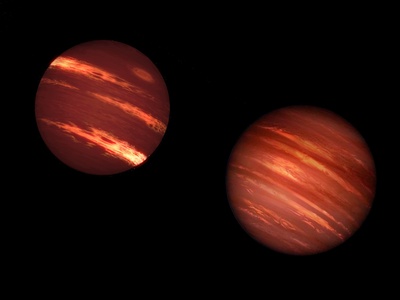
Luhman 16A
Primary of the nearby Luhman 16 binary discovered 2013; one of the Sun’s closest brown-dwarf neighbors, shows strong weather and cloud variability, excellent for high-resolution studies of atmospheres and rotation.
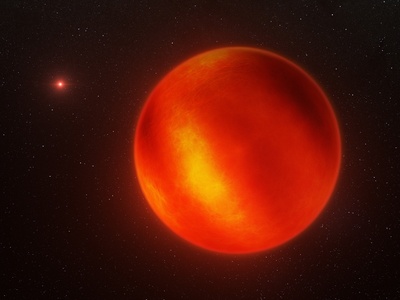
Luhman 16B
Secondary of the Luhman 16 pair discovered 2013; notable T-type companion with patchy clouds and rapid variability, valuable for comparative studies of L/T transition physics in brown dwarfs.
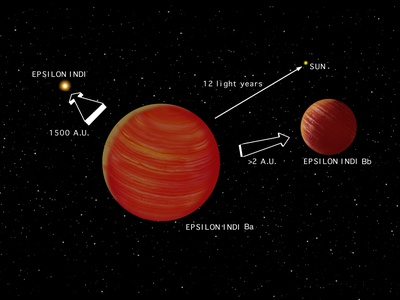
Epsilon Indi Ba
Brighter component of the Epsilon Indi brown-dwarf binary discovered as a companion to Epsilon Indi in 2003; benchmark T dwarf at 11.8 ly with dynamical mass constraints and well-studied atmosphere.
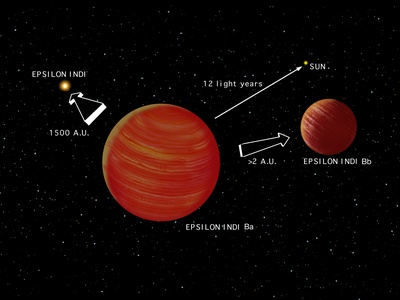
Epsilon Indi Bb
Cooler T-dwarf companion in the Epsilon Indi system discovered 2003; its proximity and companionship to a Sun-like star make it a key object for calibrating substellar evolution models.
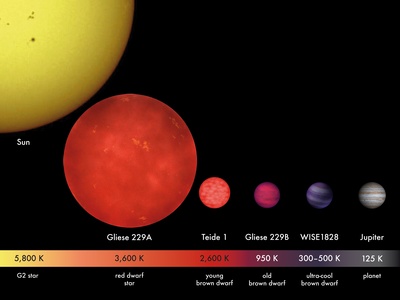
Gliese 229B
Historic T-type companion to Gliese 229 discovered 1995, one of the first confirmed brown dwarfs; stark methane-rich spectrum defined the T class and influenced brown-dwarf atmospheric theory.

Gliese 570D
Cool T-dwarf companion found in 2000 to the Gliese 570 multiple system; notable for its low temperature and use as a benchmark for cooling and atmospheric models in older brown dwarfs.
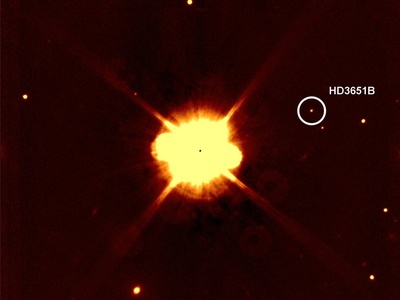
HD 3651B
T-type companion to the nearby planet-host star HD 3651, discovered 2006; useful as a companion benchmark because the primary’s age and metallicity help constrain the brown dwarf’s properties.
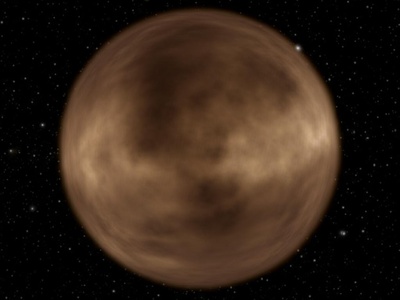
HD 130948B
Part of the brown-dwarf binary pair orbiting HD 130948 (discovered 2002); two nearly equal L-type companions provide dynamical mass tests and insights into young, warm brown-dwarf atmospheres.
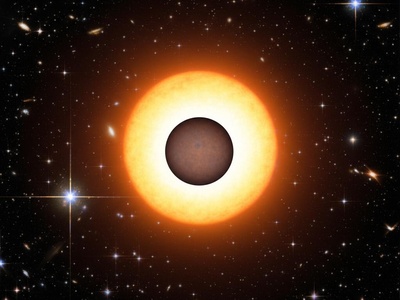
HD 130948C
Second member of the HD 130948 brown-dwarf pair discovered 2002; companion status to a Sun-like star and measured orbit allow calibration of evolutionary models for L dwarfs.
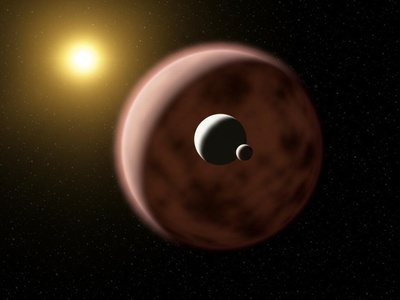
HR 7672B
A brown-dwarf companion discovered 2001 to the nearby star HR 7672; relatively high mass and direct imaging make it a cornerstone object for studying companion formation and long-term stability.

Ross 458C
Wide, cool T-dwarf companion to the Ross 458 system discovered 2006; unusually red for its temperature, it is valuable for studying low-mass, low-temperature atmospheres and wide companion formation.
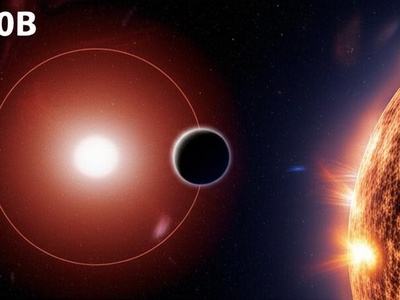
Wolf 940B
Tight cool companion discovered 2009 to the nearby M-dwarf Wolf 940; offers an important older benchmark with well-constrained system age and a deep methane-dominated spectrum.
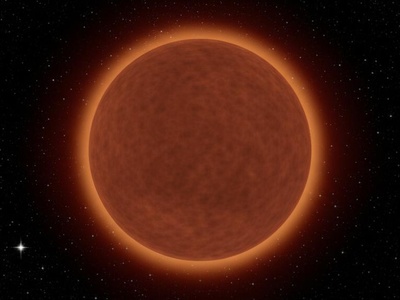
2MASS J0415-0935
One of the earliest and best-studied field T dwarfs (discovered 2002); very cool with strong methane and water features, used to map the late-T spectral sequence and cooling trends.

SDSS J125453.90-012247.4
Well-studied T2 field brown dwarf identified in SDSS surveys; serves as an archetype of the L/T transition with pronounced spectral changes over small temperature ranges.

2MASSI J0559191-140448
Bright T-dwarf discovered 2000, widely observed across IR bands; useful for spectral classification and atmospheric retrievals thanks to high signal and clear methane features.
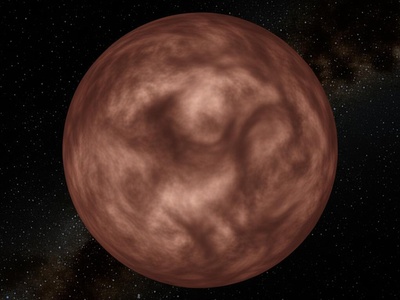
DENIS-P J0255-4700
Late L-type brown dwarf discovered by DENIS surveys; among the cooler L dwarfs, it helped define the transition into the T sequence and is a frequent target in variability studies.

Kelu-1A
Primary of the Kelu-1 binary (discovered 1997); one of the first free-floating L dwarfs found, historically important for early brown-dwarf census and rotation/activity studies.

Kelu-1B
Secondary of the Kelu-1 system discovered later via high-resolution imaging; binary status clarified early mass estimates and provided dynamical constraints on brown-dwarf models.
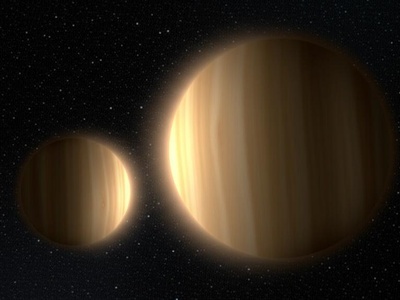
SDSS J042348.57-041403.5A
Component A of the SDSS J0423-0414 binary discovered 2003; L/T transition binary offering direct comparison of atmosphere and cloud behavior between near-equal-mass objects.

SDSS J042348.57-041403.5B
Component B of the SDSS J0423-0414 pair; contrasting spectral types within a bound system highlight rapid atmospheric evolution across the L/T boundary.
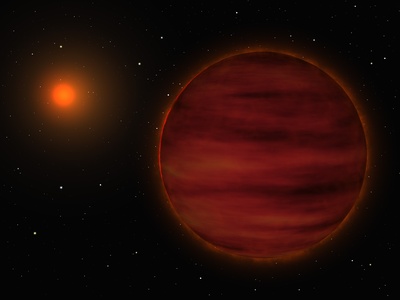
SCR J1845-6357B
T6 companion to the nearby M dwarf SCR 1845 discovered 2006; at close separation and modest distance, it offers a clear benchmark for substellar mass and atmosphere estimates.

2MASS J15344984-2952274A
One component of a resolved T-dwarf binary discovered 2003; well-observed in infrared and used to investigate temperature, surface gravity, and cloud opacity in mid-T dwarfs.
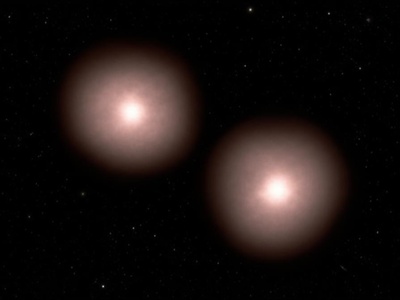
2MASS J15344984-2952274B
Secondary of the 2M1534−2952 system; paired mid-T dwarfs like this give relative constraints that improve models of brown-dwarf cooling and spectral evolution.
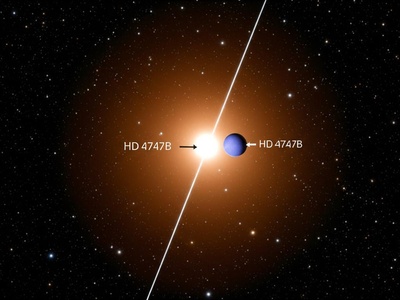
HD 4747B
High-mass brown-dwarf companion discovered by radial velocity and imaged directly; dynamical mass and host-star age constraints make it a rare, well-characterized benchmark for theory.

Gliese 229C (note: historical candidate—excluded)
Excluded to demonstrate criteria: only confirmed L/T/Y spectral brown dwarfs with reliable distances appear in this catalog.
Enjoyed this article?
Get daily 10-minute PDFs about astronomy to read before bed!
Sign up for our upcoming micro-learning service where you will learn something new about space and beyond every day while winding down.

